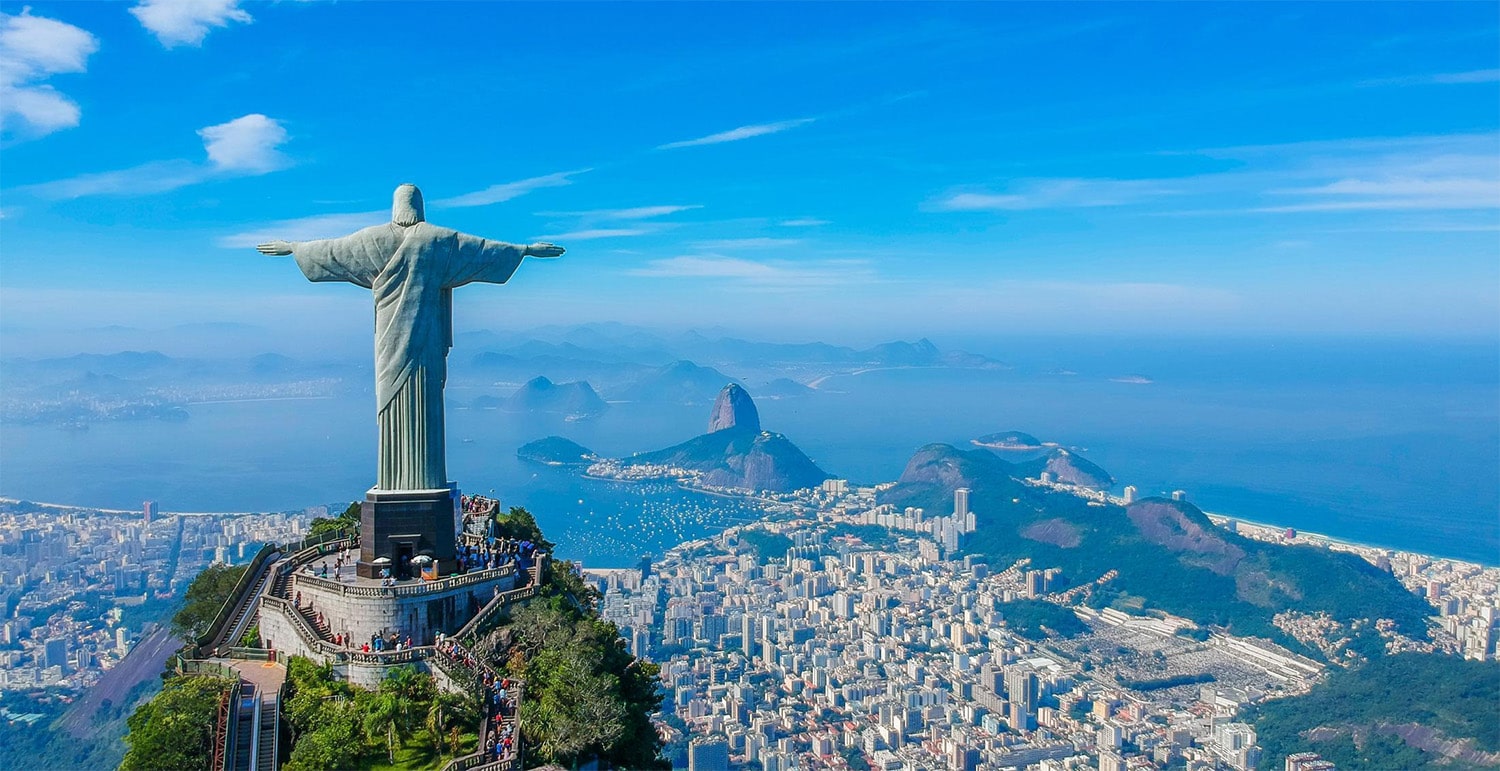
29 interesting facts about Rio de Janeiro
- 👁️ 316
Rio de Janeiro, famously known as the Cidade Maravilhosa or the “Marvelous City,” stands as a beacon of vibrancy, culture, and breathtaking natural beauty. Nestled between lush, green mountains and crystal-clear seas, this city is not only one of Brazil’s most important cultural and economic centers but also a symbol of joy, samba, and festivity worldwide. Known for its iconic landmarks such as the Christ the Redeemer statue, Copacabana Beach, and the Sugarloaf Mountain, Rio’s charm is undeniable. Beyond these well-known sites, the city holds a depth of history, a rich architectural heritage, and a dedication to preserving its unique environment. Here are 29 interesting and informative facts about Rio de Janeiro that showcase its significance and allure.
- Rio de Janeiro was the capital of Brazil from 1763 to 1960 before it was moved to Brasília.
- The Christ the Redeemer statue, one of the New Seven Wonders of the World, overlooks the city from the 710-meter-high Corcovado mountain.
- Rio is home to the world’s largest urban forest, the Tijuca Forest, which covers around 32 square kilometers.
- The city’s name means “January River” in Portuguese, mistakenly given by explorers who believed the bay was a river mouth.
- Rio de Janeiro hosts the world-renowned Carnival, considered the biggest carnival in the world with over 2 million people on the streets each day of the festival.
- The Maracanã Stadium in Rio is one of the largest football stadiums in the world, hosting the final match of the FIFA World Cup in 1950 and 2014.
- Rio’s Copacabana Beach inspired the famous song “The Girl from Ipanema.”
- Sugarloaf Mountain, or Pão de Açúcar, offers panoramic views of the city and is accessible by a cable car.
- The city was founded by the Portuguese on March 1, 1565.
- Rio de Janeiro’s botanical garden, founded in 1808, houses more than 8,000 species of plants.
- The iconic black and white wave pattern of Copacabana’s sidewalk was designed by landscape architect Roberto Burle Marx.
- The Rio de Janeiro Carnival parade features samba schools, which are large, social entities with their own theme, music, and dance.
- The Sambadrome Marquês de Sapucaí is the parade area designed specifically for the Samba School Parade during Carnival.
- Ipanema and Leblon beaches are known for setting trends in beachwear fashion.
- The city was the Portuguese Empire’s headquarters from 1808 to 1821, the only European capital outside of Europe.
- Rio is the second-most populous municipality in Brazil, after São Paulo.
- The Santa Teresa Tram, or Bondinho de Santa Teresa, is the oldest electric tramway in Latin America.
- The Carioca Aqueduct, an impressive architectural feat from the colonial period, now serves as a bridge for the Santa Teresa Tram.
- Rio’s port is the site of the “Porto Maravilha” urban renewal project, which includes the Museum of Tomorrow, focusing on sustainability and ecology.
- The city has a significant representation of Art Deco architecture, including the Cristo Redentor statue.
- Flamengo Park, the largest leisure area of Rio de Janeiro, was designed by Burle Marx.
- Rio was the first city in the world to be designated a World Heritage Site by UNESCO in the category of Cultural Landscape.
- The Biblioteca Nacional do Brasil in Rio is the largest library in Latin America.
- The Rio Carnival officially begins with the handing over of the city keys to King Momo, a symbolic figure of Carnival.
- The “Cidade Maravilhosa” nickname was popularized by the song of the same name, written in the early 20th century.
- Pedra da Gávea is a monolithic mountain in Rio, famous for its hiking trails and hang gliding launch point.
- The Selarón Steps are a colorful set of stairs decorated with tiles from over 60 countries, created by artist Jorge Selarón.
- The first electric street lighting in Brazil was installed in Rio de Janeiro.
- The city’s subway system is the only one in Brazil that operates with driverless trains.
Rio de Janeiro’s blend of natural beauty, cultural richness, and historical significance makes it one of the most fascinating cities in the world. From its majestic mountains and iconic landmarks to its lively streets and vibrant Carnival, Rio encapsulates the spirit of Brazil. The city’s dedication to preserving its natural landscapes and architectural heritage, alongside its role as a melting pot of cultures, continues to enchant visitors and residents alike. As we uncover the marvels of Rio de Janeiro, we are reminded of the city’s enduring charm and its significant place not only in Brazil but in the heart of the global community. The stories and facts of Rio offer a glimpse into a city that pulsates with life, creativity, and resilience. Celebrating Rio de Janeiro is celebrating a testament to human and natural splendor, an invitation to explore and appreciate the world’s diverse cultures and landscapes. As the city continues to evolve and grow, it remains a beacon of inspiration, a reminder of the beauty that arises from the harmonious blend of nature and humanity.
Rio de Janeiro, famously known as the Cidade Maravilhosa or the “Marvelous City,” stands as a beacon of vibrancy, culture, and breathtaking natural beauty. Nestled between lush, green mountains and crystal-clear seas, this city is not only one of Brazil’s most important cultural and economic centers but also a symbol…